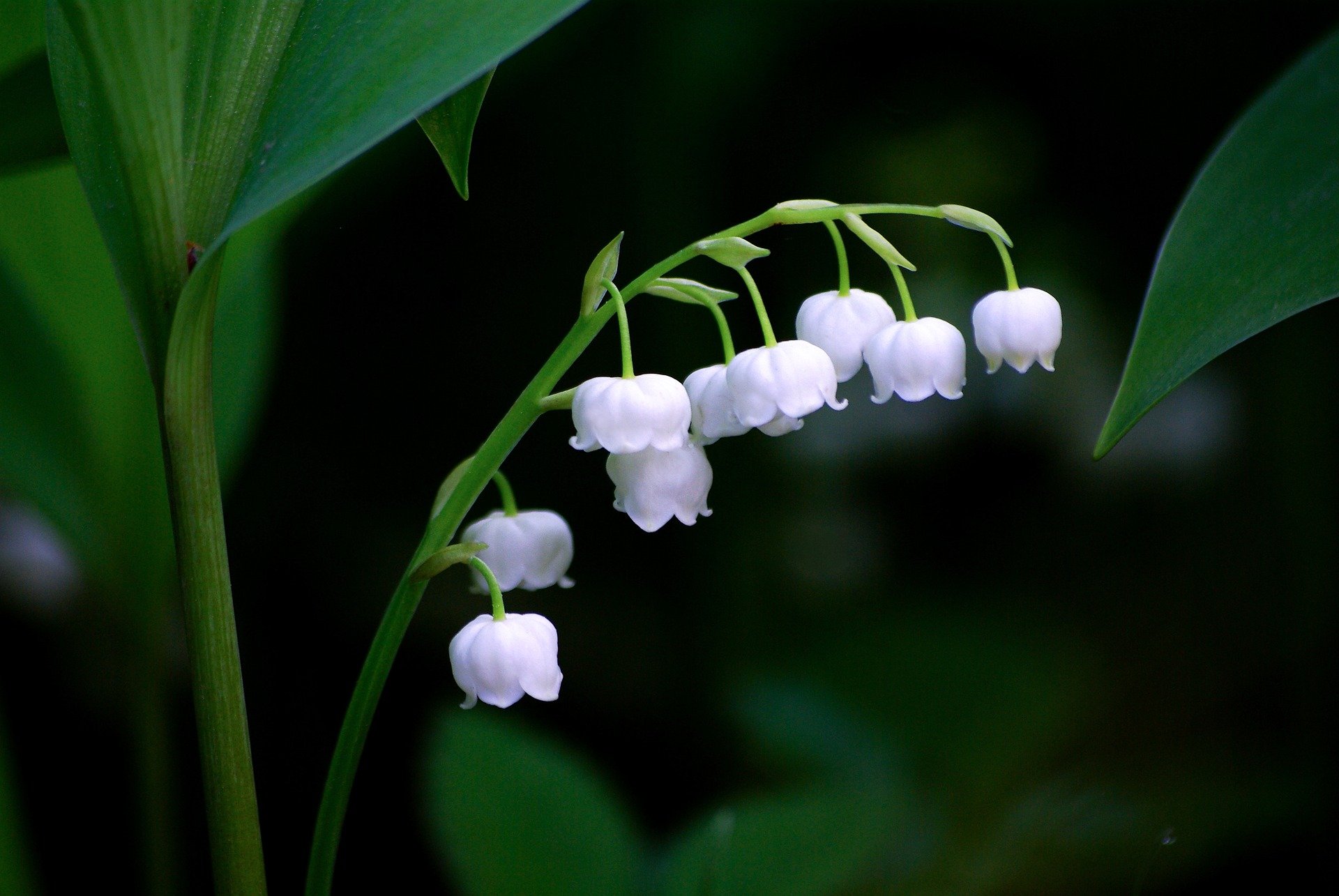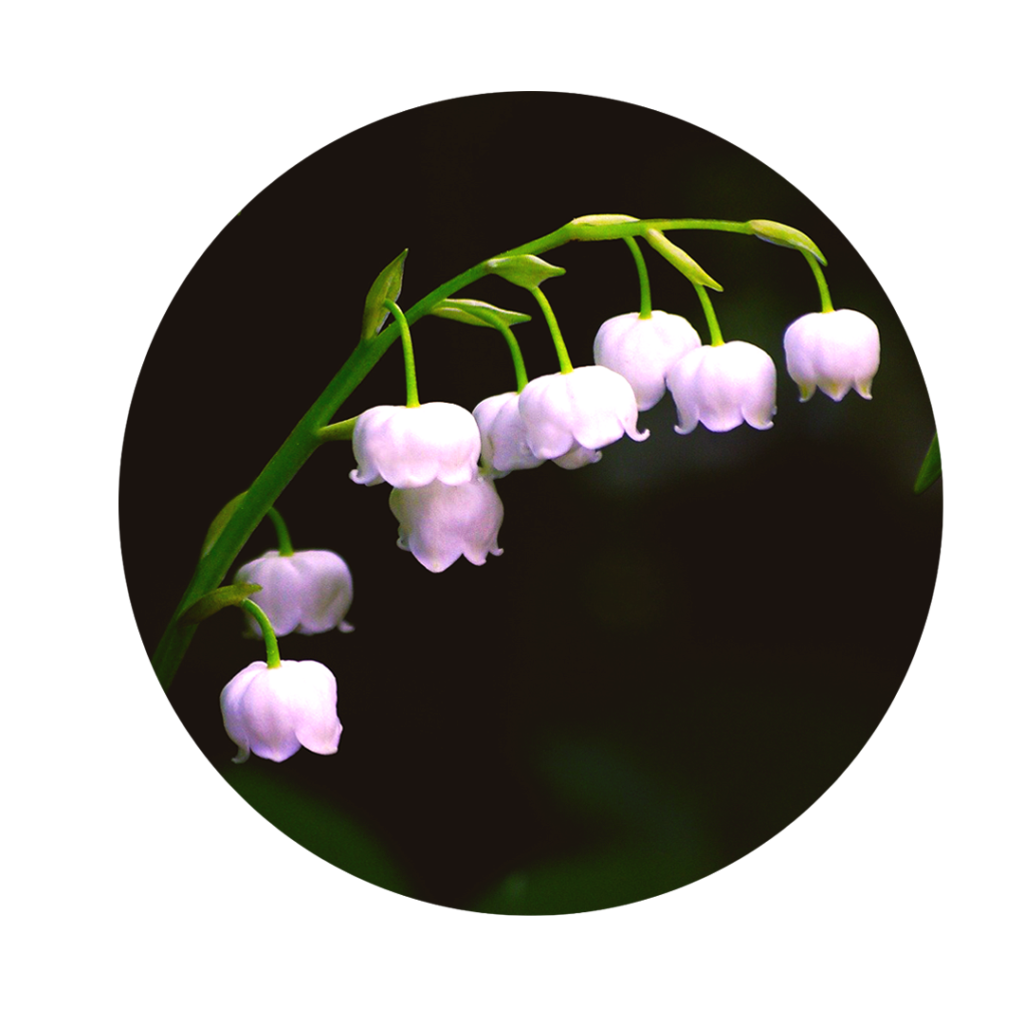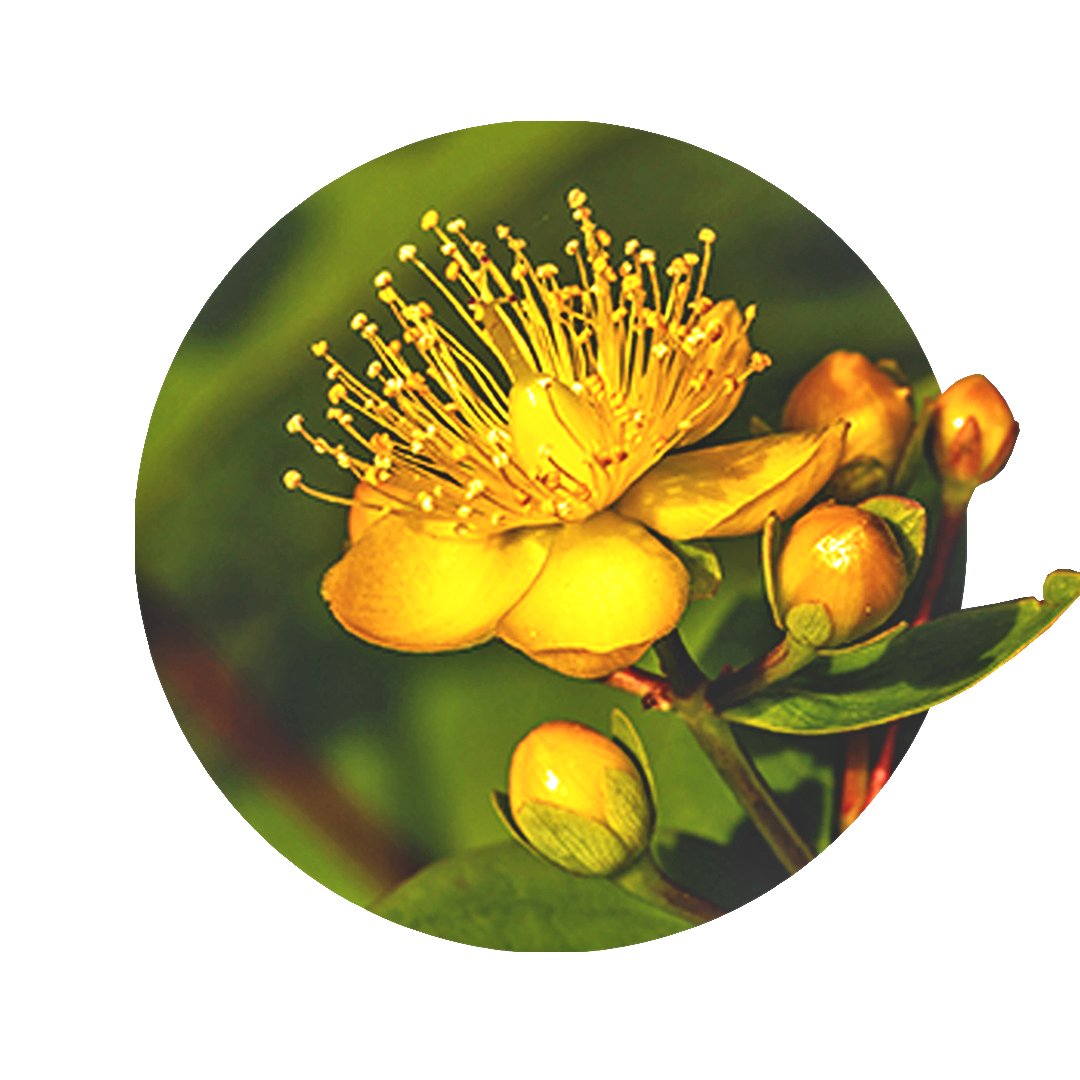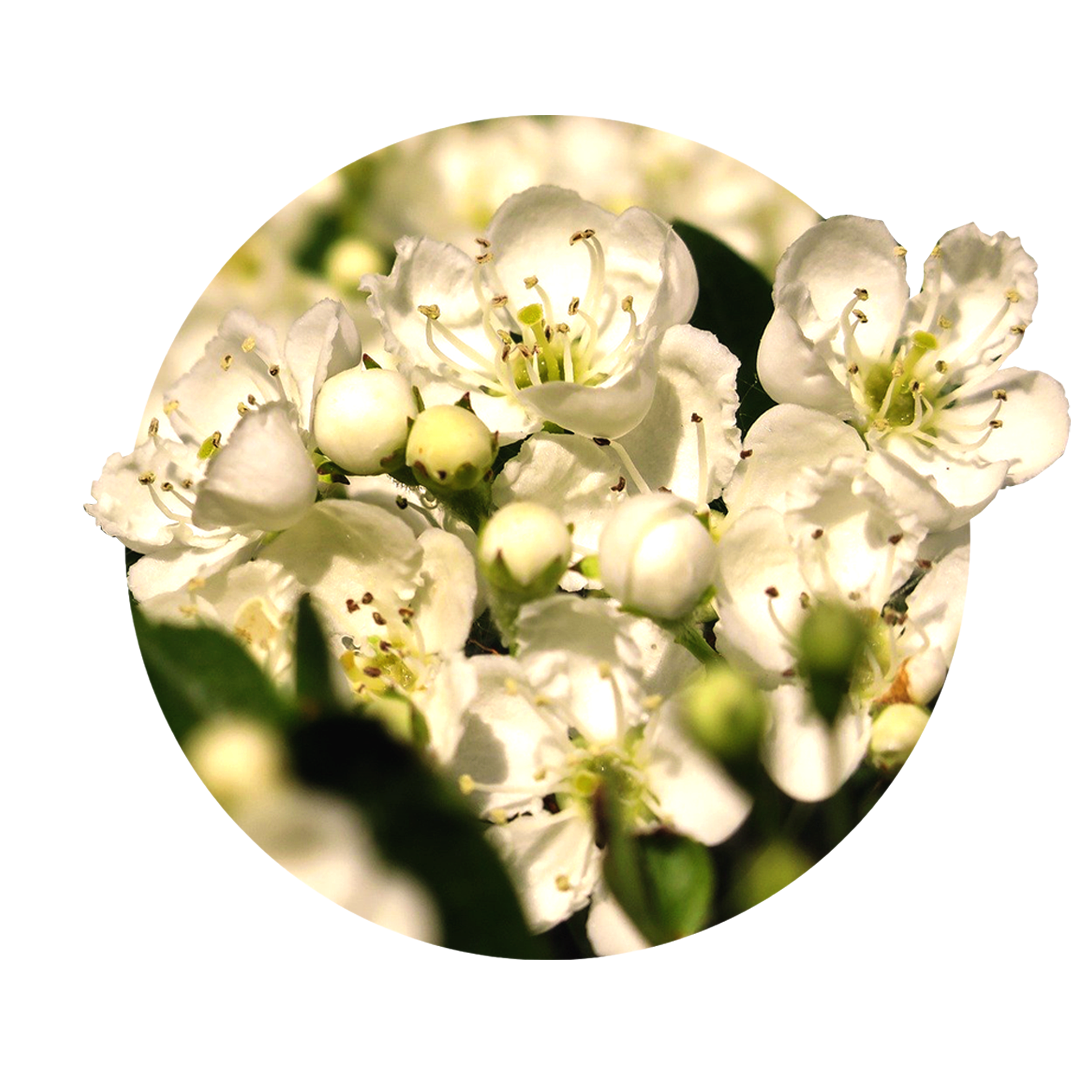Lily of the valley: Much more than a beautiful ornamental plant
The lily of the valley is a real feast for the eyes. With its beautiful white bells and elfin appearance, it enchants us every spring anew. But this plant has it all. Since the 15th century, lily of the valley has been used as a remedy for heart problems with water retention. Its effectiveness is due to a toxin related to foxglove. Lily of the valley is highly toxic and can cause cardiac death even in small amounts. Therefore, it is no longer in use today as a phytotherapeutic. However, in homeopathy and spagyrics, it is a much-used, important cardiac remedy. This spring plant also brings a second spring to the old heart and makes it beat strongly again.
Lily of the valley facts
Did you know that...
...Convallaria with the rose and the lily belongs to the so-called Marian plants of Christian iconography?
... the lily of the valley looks similar to wild garlic and unfortunately often confused?
...Freddy Mercury from Queen in his song Lily of the Valley singing about the lily of the valley?
What is the lily of the valley?
Lily of the valley is a plant from the asparagus family that grows to a height of about 20 cm and is native to our region. It grows in the scree slopes of the mountains as well as in forest areas or riverside areas. It prefers semi-shaded areas, but it also grows in full shade, but usually without forming flowers. It thrives on calcareous soils as well as on acidic soils. Lily of the valley is also popular as a spring bloomer in gardens and parks because of its beautiful, graceful appearance and handsome blooms. In addition, it is noticeable by a very pleasant smell and is therefore also used a lot in the perfume industry.
General and medicinal properties of Convallaria majalis
Draining
Lily of the valley is draining. When the heart is too weak to circulate blood properly, water retention occurs in the legs. Lily of the valley strengthens the heart and ensures that this water is removed and does not accumulate again.
Heart invigorating
Lily of the valley is heart-strengthening. It supports the heart muscle in its work and strengthens it so that it can properly pump blood around the body.
Blood pressure regulating
Lily of the valley regulates blood pressure. In heart weaknesses, blood pressure is not always correct at each stage of a pumping process. Due to the fact that Convallaria strengthens the heart muscle, these pressures return to normal and the overall blood pressure is correct again.
Convallaria majalis: Ingredients
So far, 38 glycosides have been identified in lily of the valley. The most important, medically significant ones are listed here.
You can find the following ingredients in lily of the valley:
- Convallatoxin
- Convalloside
- Convallatoxol
Lily of the Valley: Effect for body and mind
Lily of the valley gained its great importance in the 15th century, when it was increasingly discovered as a medicinal plant for dropsy and cardiac insufficiency. Today, its importance outside of naturopathy is low, as synthetic digitalis preparations are usually used when there is an indication. Digitalistoxin is very closely related in action to the active ingredients of lily of the valley. In naturopathy, Convallaria is often used for patients in whom a high emotional burden and emotional sensitivity burden and weaken the heart. It is said to restore, give strength and restore the rhythm of life.
Properties of lily of the valley
- Re-rhythmizing
- Invigorating
- Draining
- Heart Strengthening
- Drive enhancing
- Blood pressure regulating
Fields of application in naturopathy
Convallaria always revolves around the heart as the center of action. It thus belongs to the heart specialists of naturopathy.
Lily of the valley in heart failure
Heart failure means that the heart is not performing as it should in order to do its job. It may be beating too little, too weakly, arhythmically, or a little bit of everything. Lily of the Valley strengthens the heart muscle so that it can beat strongly and evenly again.
Lily of the valley for functional heart complaints
Functional heart complaints often have a psycho-emotional background. Organically, however, nothing can be determined. Naturopathically, the lily of the valley also has a strong connection to the unconscious part of the psyche and is therefore often seen as the heart remedy of choice in these cases. Often, this therapy also brings up issues that were deeply dormant and can now be worked on, so that the heart can find its peace again.

Convallaria majalis for stress reactions
Some substances in the body can weaken and deplete the heart over a long period of time. These include the stress hormones adrenaline and cortisol. Adrenaline stimulates the heart to perform at full capacity under stress. However, if the effect lasts for a long time, the heart lacks recovery and becomes exhausted. Cortisone raises the sugar level and can thus promote diabetic inflammation of the heart. Convallaria strengthens the overworked heart and strengthens the heart muscle so that the heart can do its work as usual.
Lily of the valley by the age heart
The old age heart develops by already having to perform a lot. The beating power of the heart decreases, the blood pressure changes and the rhythm can be disturbed. In many cases the patient gets edema in the legs, because the blood is not moved sufficiently. Convallaria supports the heart muscle so that it can beat strongly again. The edema will decrease and life will return to the organism.
Lily of the valley for cardiac arrhythmias
Cardiac arrhythmia is a common symptom of heart weakness. Lily of the valley contains cardiac glycosides, which make the heart muscle beat more powerfully, and also more steadily. The rhythm of the heart is thus restored and the unpleasant feeling in the chest disappears.
Convallaria majalis in cor pulmonale
When obstructive lung disease is present and the lungs offer more resistance than normal, the heart finds it harder to pump blood to the lungs. The result is an enlargement of the right side of the heart and eventually an insufficiency of it. The heart simply can't cope and has no more strength to do its job. Lily of the valley can help here, because it strengthens the heart muscle and stimulates it to work better. Thus, the enlargement can recede and the heart can return to normal.
Lily of the valley for dizziness
Sometimes the dizziness occurs because the blood pressure is unstable. If it drops rapidly because the heart is not pumping strongly enough, dizziness may occur. In this case, the heart needs support and the lily of the valley strengthens the weak heart muscle. The heart can thus ensure its pumping capacity again and beat evenly. The dizziness disappears and does not return.
Notes on the use of lily of the valley
Lily of the valley is used exclusively as a homeopathic or spagyric preparation. The toxin level of the fresh plant varies so much that a dosage is actually not possible. Therefore, it is no longer of great importance allopathically today. Its place has been taken by the digitalistoxin of foxglove.
Naturopathic preparations are mostly mixed preparations and are used both as a cure and for longer periods of time. Taking them several times a day is common.
Lily of the valley during pregnancy & lactation
Basically, Convallaria should never be taken as self-medication. It is not recommended to take it during pregnancy and breastfeeding.
Lily of the valley when taking diuretics and other cardiac drugs.
If you are already taking diuretics or other cardiac medications, please discuss the intake of Convallaria preparations with the practitioner. If necessary, interactions may occur.

Get your lily of the valley complex now and harness the healing power of Convallaria majalis
Lily of the valley complex
100% Lily of the valley for spraying!
24,99€
incl. VAT, base price: 24,99 € / 30ml
Use the healing power of lily of the valley and our other 100 medicinal plants to naturally alleviate your ailments. Improve your well-being and support your body, mind and soul! With the help of our Configurator Your personal spagyric spray that is tailored to your needs and accompanies you on your natural path to improving your body, mind and soul.







